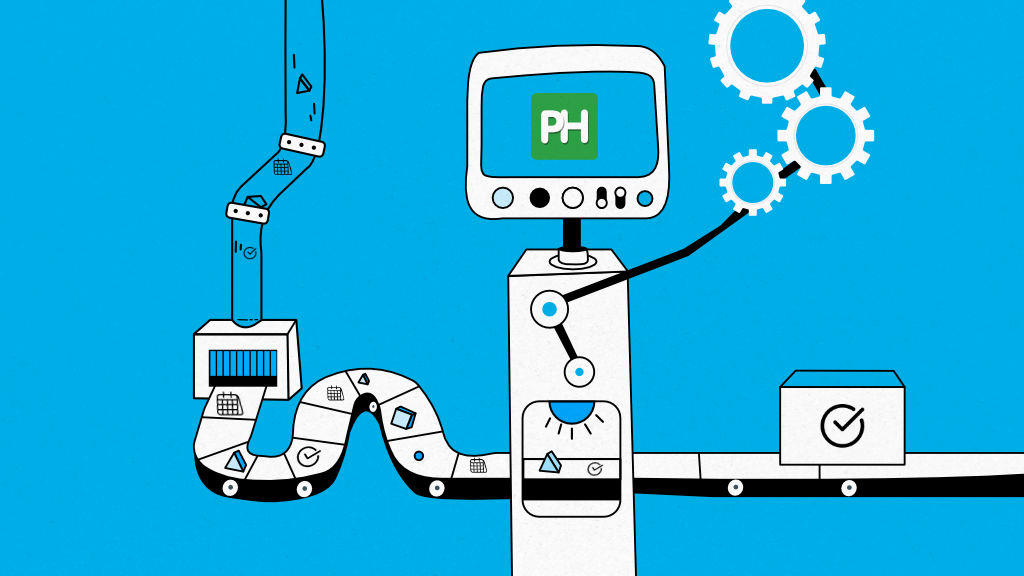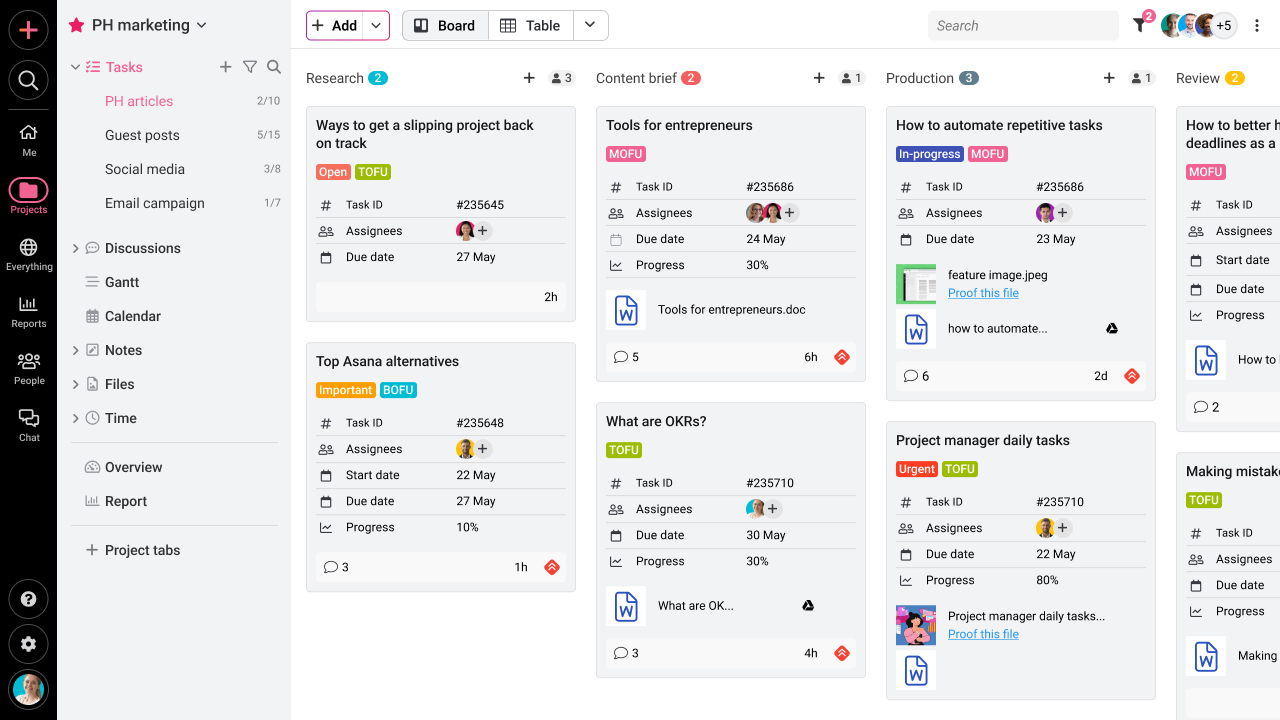Introduction
Content creation involves several different steps in the content creation process, from ideation to publication, and managing each of these steps can be a significant challenge. With the right approach to workflow content management, it’s possible to streamline the process and ensure that all content is produced to the highest standard.
I’m sure you’re already thinking about and asking yourself, “What is content workflow management?” What are the benefits? How can I put together a content workflow system that will help me reach my goals?
You will find all the answers to your questions in this guide.
What is content workflow management?
Content workflow management is the structured process of planning, writing, reviewing, approving, and publishing content within an organization. It provides clarity and structure to the content creation process, helping the team to work more efficiently, reduce errors, and ensure that content meets the organization’s goals.
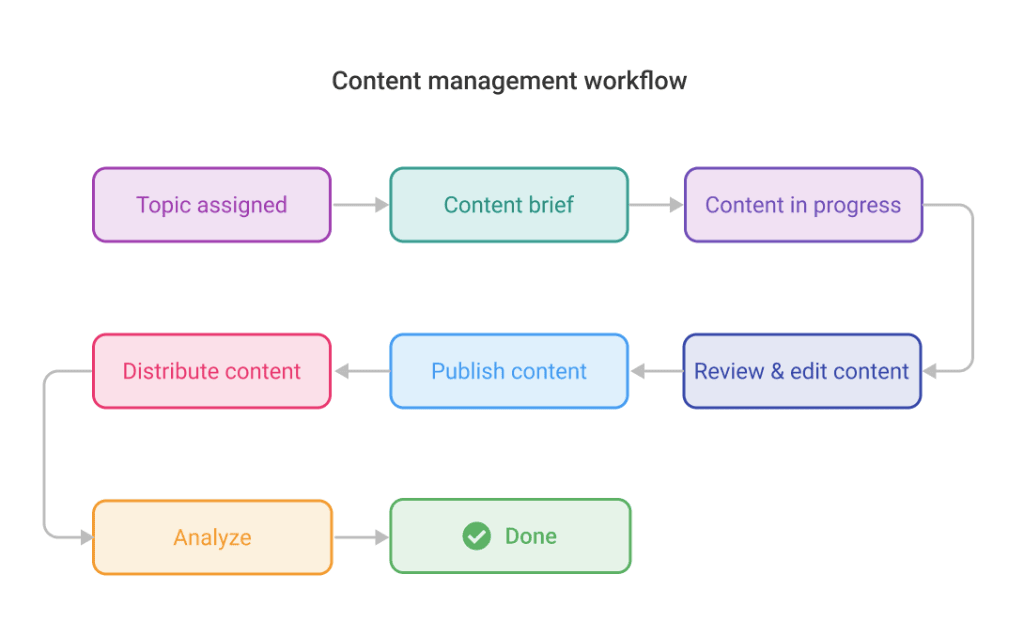
A content management workflow addresses all of your questions about how you want your content strategy to provide the desired results.
- What is the purpose of this content?
- What kind of content do I want to put out there?
- What are my aims and goals for each content type?
- Who is in charge of what?
- What are the best channels to use?
- Which tools should I use?
Imagine how difficult it would be to manage a project with as many details as the one described above without a system in place.
Why content workflow management is important?
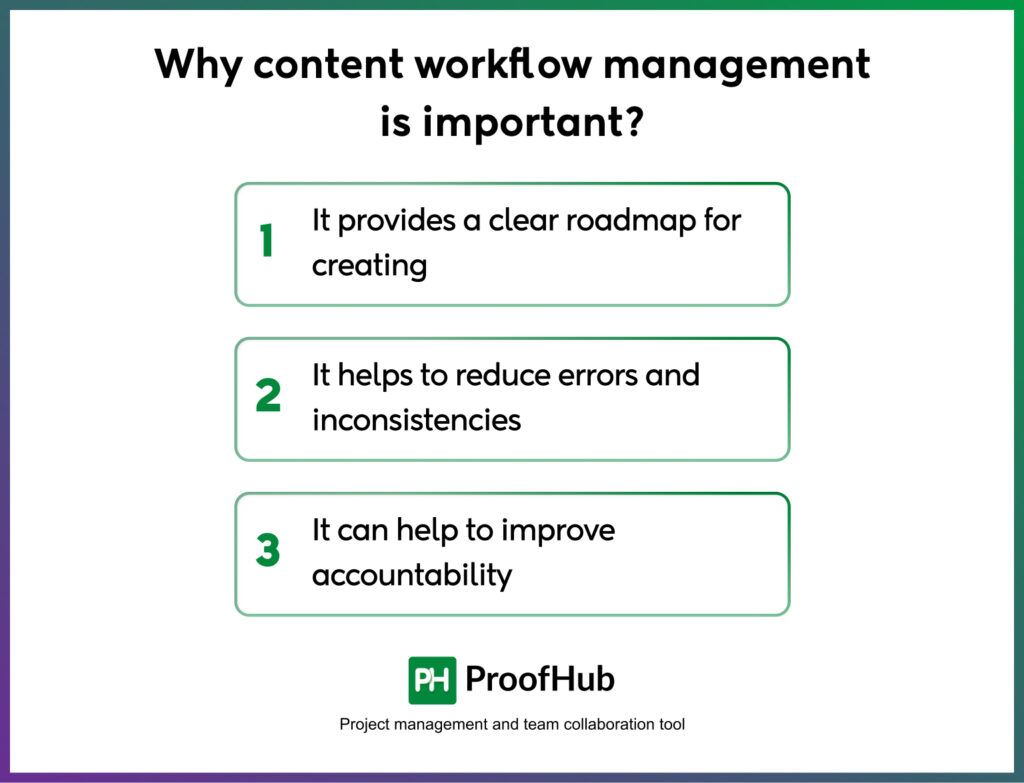
As a content marketer, I understand the importance of having a well-defined content management workflow in place. A defined content strategy workflow helps content marketing teams in several ways.
- It provides a clear roadmap for creating and publishing content. With a defined workflow, team members understand their roles and responsibilities and can work together more effectively. Which leads to faster production of high-quality content that aligns with the organization’s goals.
- It helps to reduce errors and inconsistencies. By following a structured process, team members can ensure that all content meets the organization’s standards and is consistent with the brand’s voice and message. It can help to build trust with the target audience and establish the organization as a thought leader in its industry.
- It can help to improve accountability and ownership. By clearly defining the roles and responsibilities of each team member, it’s easier to hold them accountable for their work. This can lead to a more focused and committed team, resulting in higher-quality content that meets the organization’s goals.
However, if a workflow is not defined, the content creation process can become chaotic and disorganized. Not having a documented content management workflow can lead to several challenges for content marketing teams. Some of these challenges include:
- Confusion: Without a defined process, team members may not understand their roles and responsibilities, leading to confusion and delays in the content creation process.
- Inconsistency: A lack of a documented workflow can lead to inconsistent messaging and branding.
- Missed Deadlines: A lack of accountability and ownership can lead to missed deadlines and delays in content production.
- Inefficient Use of Resources: Without a clear workflow, team members may waste time and resources on unnecessary tasks.
- Lack of Improvement: Without a defined workflow, it’s challenging to analyze and improve the content creation process.
It is clear from above that it is essential to establish a tailored workflow that suits your team and organization if one does not already exist. The benefits that come with it will undoubtedly justify the time and effort invested.
Benefits of utilizing content workflow management for your business
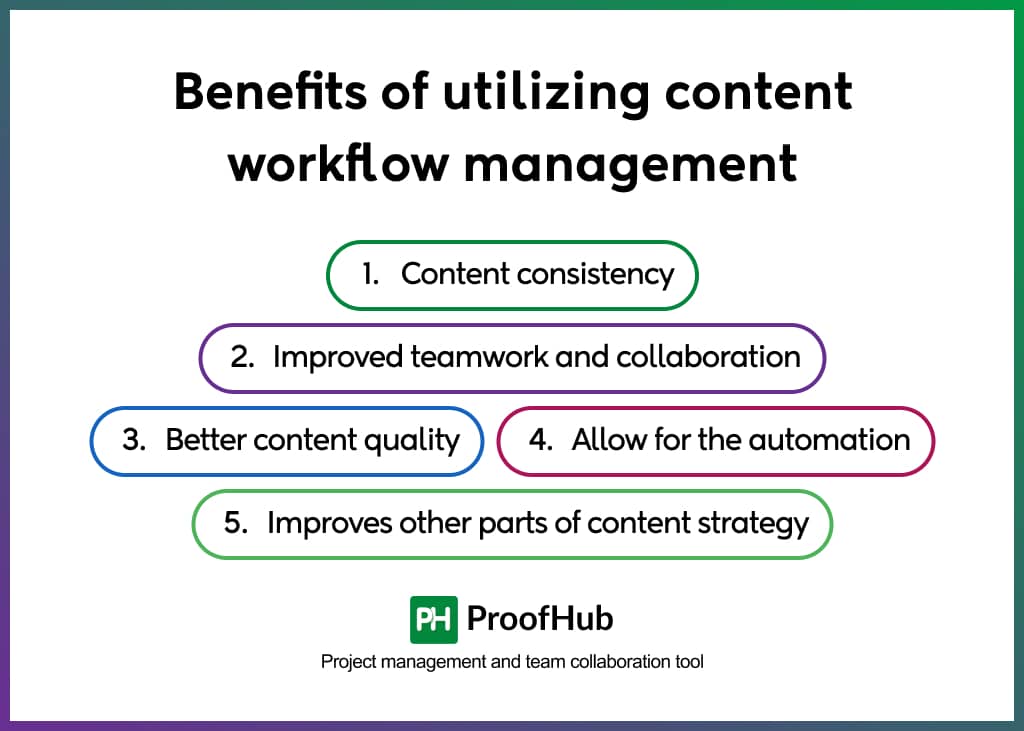
Creating outstanding content is like preparing your favorite meal. You’ll need a recipe if you want to consistently achieve great results. Consider your content strategy workflow to be your recipe for success.
In comparison to manual email collaboration, an effective content workflow management system offers the following benefits.
- Content consistency: A content workflow management system aids in the design of regular processes and routines for all content-generating jobs. You may establish a pattern for obtaining greatness while retaining your creativity. As a result, creating amazing content becomes a habit for you rather than a one-time affair.
- Improved teamwork and collaboration: Using a workflow management system, your team may be more productive by communicating and collaborating more effectively. Everyone on the team has a clear understanding of their function and the responsibilities that come with it.
- Better content quality: A content workflow management system can help you design and document set processes for accomplishing a task, resulting in higher-quality material. Troubleshooting is considerably easy when a problem emerges. You can instantly pinpoint where the content production pipeline is falling short.
- Allow for the automation of repeatable processes: You won’t be trapped writing emails, filling up a content calendar by hand, or replying to endless social media answers all day. A content workflow management system aids in the organization of these activities, as well as the introduction of specific software to manage repeated tasks and procedures.
- Improves other parts of content strategy: what happens after a flawless execution and your material is published? I hope you don’t believe that’s it. You must promote your content, track results, and tweak content as needed for improved success.
Nothing is ignored or completed too quickly with a content workflow management system. Everything is given the time and attention it requires. As a result, high performance is guaranteed.
6 steps for creating a content management workflow
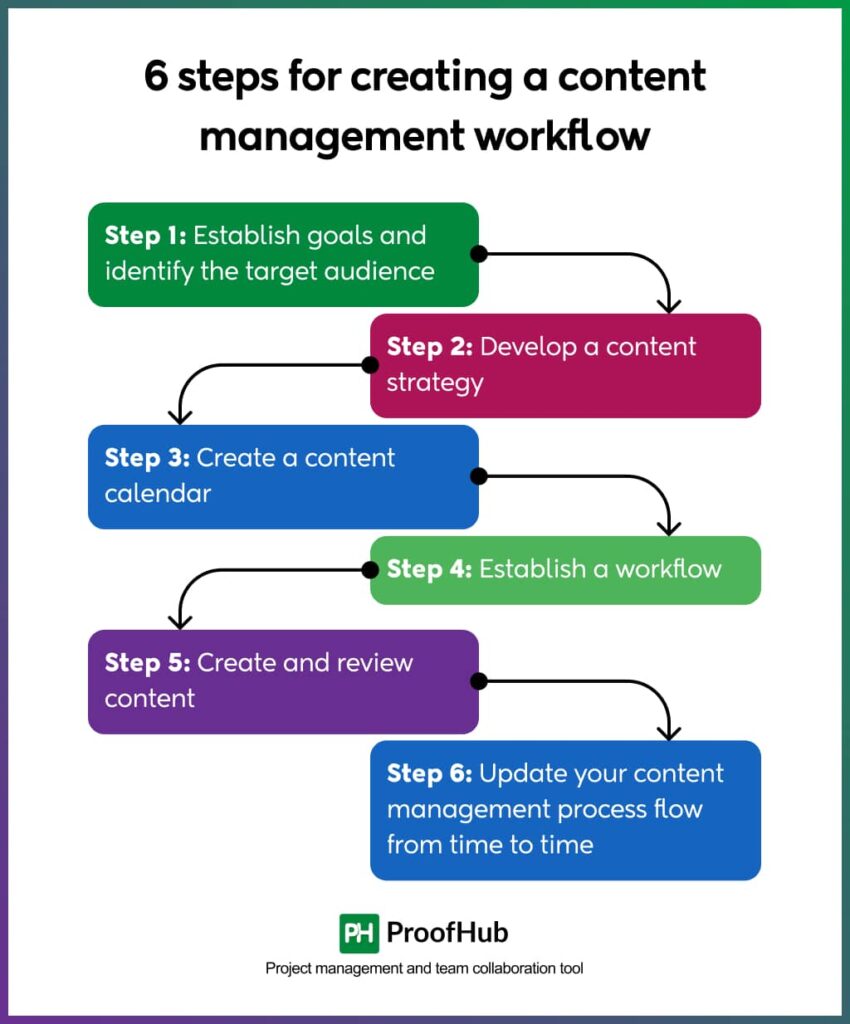
Step 1: Establish goals and identify the target audience
When it comes to content workflow management, setting clear goals and identifying the target audience are crucial steps that I always prioritize. I find that establishing specific goals helps to direct the content creation process towards a specific outcome, making it easier to measure the success of the content. It also helps to keep everyone on the same page and ensures that the content created is aligned with the organization’s objectives.
Here are some tips that I find useful for identifying goals and target audiences for content workflow management:
- Define your goals: Start by defining what you want to achieve with your content. Do you want to generate more leads, increase website traffic, or boost brand awareness? Your goals should be specific, measurable, and aligned with your overall business objectives.
- Conduct audience research: Next, identify your target audience by conducting research. Who are they? What are their pain points? What are their interests and preferences? This information can help you create content that resonates with your target audience and addresses their specific needs.
- Use analytics: Utilize analytics tools to track website traffic, engagement rates, and other metrics. This data can help you understand which types of content are resonating with your audience and adjust your content strategy accordingly.
- Consider different funnel stages: Consider the different stages of the buyer’s journey, and tailor your content accordingly. For example, at the top of the funnel, focus on creating content that generates awareness and attracts new leads. At the middle of the funnel, focus on educating and nurturing leads, and at the bottom of the funnel, focus on converting leads into customers.
Finally, remember to keep your goals and audience in mind when creating content. This will ensure that your content is focused, effective, and aligned with your overall business goals.
Step 2: Develop a content strategy
A content strategy is essential for several reasons. First, it helps ensure that your content is aligned with your business goals and objectives. Without a strategy, you may end up creating content that is irrelevant to your audience or that does not support your business objectives.
Second, a content strategy helps you stay organized and on track. With a strategy in place, you can plan out your content in advance, ensuring that you have a steady flow of content to share with your audience.
Third, a content strategy helps you optimize your content for search engines. By incorporating SEO best practices into your strategy, you can increase the visibility of your content and drive more traffic to your website.
Tips for creating an effective content strategy
Creating an effective content strategy requires careful planning and execution. Here are some tips to help you get started:
- Define your target audience: Your content strategy should be tailored to your target audience. By defining your audience, you can create content that resonates with them and meets their needs.
- Set goals and objectives: Your content strategy should align with your overall business goals and objectives. Define what you want to achieve with your content, such as increased website traffic or higher engagement on social media.
- Develop a content calendar: A content calendar helps you plan out your content in advance and ensures that you have a steady flow of content to share with your audience.
- Incorporate SEO best practices: To ensure that your content is optimized for search engines, incorporate SEO best practices into your strategy, such as keyword research and on-page optimization.
- Monitor and measure results: Regularly monitor and measure the results of your content strategy to see what is working and what is not. Use this information to refine your strategy and improve your content.
Step 3: Create a content calendar
If you’re like me and you love to create content, then you know how overwhelming it can be to keep track of all the topics, ideas, and deadlines. That’s where a content calendar comes in handy! Not only does it help you organize your thoughts, but it also helps you stay on track and keep your content consistent. Here are some benefits of using a content calendar:
- With a content calendar, you can keep all your ideas, topics, and deadlines in one place.
- By planning with a content calendar, you can make sure that you’re publishing content on a consistent schedule.
- You can prioritize important content based on seasonality, product launches, or any other relevant factors.
Now that we’ve covered the benefits of using a content calendar, let’s talk about how to create and manage one effectively with a reliable project management tool.
- Set up a new project: To get started, set up a new project for your content calendar. Give it a descriptive name that makes it easy to find and identify.
- Define your content types: Identify the different types of content you plan to create, such as blog posts, social media updates, videos, podcasts, etc. Create task lists for each content type within your project.
- Create tasks for each piece of content: For each piece of content, create a new task within the relevant content type task list. Be sure to include all the relevant information, such as the topic, keywords, publish date, and any other important details.

- Set deadlines and assign tasks: Set deadlines for each task to ensure that you stay on track and meet your publishing schedule. Assign tasks to the relevant team members responsible for creating and publishing the content.
- Use comments and mentions: Use the comments section to communicate with your team members and ensure that everyone is on the same page. You can also use mentions to notify specific team members about tasks that need their attention.
- Use the calendar view: Use the calendar view to get a visual representation of your publishing schedule. This view allows you to see all your content in one place and easily move tasks around if necessary.

- Monitor progress: Regularly monitor your content calendar to ensure that you’re meeting your deadlines and publishing schedule. Use the progress tracking feature to get a quick overview of how each task is progressing.
By following these steps, you can create and manage your content calendar with ease, ensuring that your content is published on time and schedule.
Step 4: Establish a workflow
An effective workflow is critical for successful content creation. It helps to ensure that each piece of content is high-quality, optimized for search engines, and published on time. Without a workflow, the content creation process can become disorganized and chaotic, leading to missed deadlines and low-quality content.
- To design an effective workflow, start by defining the different stages of the content creation process. Typically, these stages include ideation, research, writing, editing, proofreading, and publishing.
- Next, assign specific team members to each stage of the process to ensure that everyone knows their roles and responsibilities.
- Once you have defined the stages of the workflow, establish clear guidelines and standards for each stage. For example, set deadlines for each stage and ensure that each piece of content is reviewed and edited before publishing.
- Another important aspect of an effective workflow is communication. Ensure that everyone involved in the process is aware of the workflow and understands their role.
- Use collaboration tools such as ProofHub to make it easy for team members to communicate and collaborate on content creation.
Examples of content creation workflows
There are various types of content creation workflows in content management that can be used to streamline and automate different aspects of the content creation and publishing process. Here are a few examples:
- Editorial workflow: This workflow manages the content creation process from ideation to publication. It includes tasks such as content planning, research, writing, editing, proofreading, and publishing.
- Review and approval workflow: This workflow manages the review and approval process for content before it is published. It includes tasks such as reviewing content for accuracy, consistency, and style and getting approval from stakeholders before publishing.
- Translation workflow: This workflow is used to manage the translation of content into different languages. It includes tasks such as identifying content that needs to be translated, selecting the translation vendor, and reviewing and approving the translated content.
- Social media workflow: This workflow is used to manage the creation and scheduling of social media content. It includes tasks such as content creation, selecting appropriate social media channels, scheduling social media posts, and tracking engagement metrics.
- Asset management workflow: This workflow is used to manage the creation, storage, and distribution of digital assets such as images, videos, and audio files. It includes tasks such as asset creation, metadata tagging, and tracking asset usage and permissions.
By using different workflows in content management, organizations can automate and streamline various aspects of the content creation and publishing process, leading to increased efficiency, consistency, and quality.
Step 5: Create and review content
I know how challenging it can be to consistently create high-quality content that resonates with your target audience. However, with a few tips and tricks, you can ensure that the content you produce is engaging, informative, and shareable. Here are crucial steps in the content creation process that will help you drive traffic to your website and build a loyal following.
- Know Your Audience: The first step in creating high-quality content is to know who you’re creating it for. Spend time understanding your audience’s needs, interests, and pain points. It will help you tailor your content to their preferences and create something that truly resonates with them.
- Conduct Thorough Research: It’s crucial to conduct thorough research on the topic you’re writing about to create informative, accurate, and well-researched content that your readers will find valuable. Use reputable sources, data, and statistics to back up your claims.
- Craft Compelling Headlines: Your headline is the first thing your audience will see, so it’s important to make it count. Craft a headline that’s catchy, informative, and attention-grabbing. It will encourage people to click through and read your content.
- Write in an Engaging Tone: To keep your readers engaged, write in a conversational tone that’s easy to understand. Avoid using jargon or technical terms unless necessary. Use active voice, short sentences, and concise paragraphs to make your content easy to read.
- Include Visuals: Visuals such as images, infographics, and videos can make your content more engaging and shareable. They break up the text and help illustrate your points. Be sure to use high-quality visuals that are relevant to your content.
- Edit and Proofread: Before publishing your content, be sure to edit and proofread it thoroughly. Check for spelling and grammatical errors, and ensure that your content flows well and that your message is clear. Use tools like Grammarly or Hemingway to help you identify and correct any errors.
Step 6: Update your content management process flow from time to time
As projects, plans, and team members change, you’ll need to update your workflow. While you don’t need to fine-tune and change your documentation for every minor detail, you don’t want it to become so outdated that your team members can’t use it as a reference.
It’s critical to audit, test, and renew your content regularly in content marketing. It could be due to a drop in performance or because you’re preparing a site-wide sweep. I’m not recommending you abandon such efforts in favor of automation, but this can serve as a catch-all for monitoring your content’s performance.
Naturally, not all content is made equal.
You may not have to audit regularly for constant articles. You can set a rule to prevent the automation from activating by adding a custom field or marking the task as “constant.”
All I’m saying is that a quarterly workflow audit, in which you and your team discuss current workflows and any needed updates, adjustments, or optimizations, is a fantastic goal to aim for.
By following these tips, you can create high-quality content that engages your audience, drives traffic to your website, and helps you build a loyal following.
How content workflow software can help?
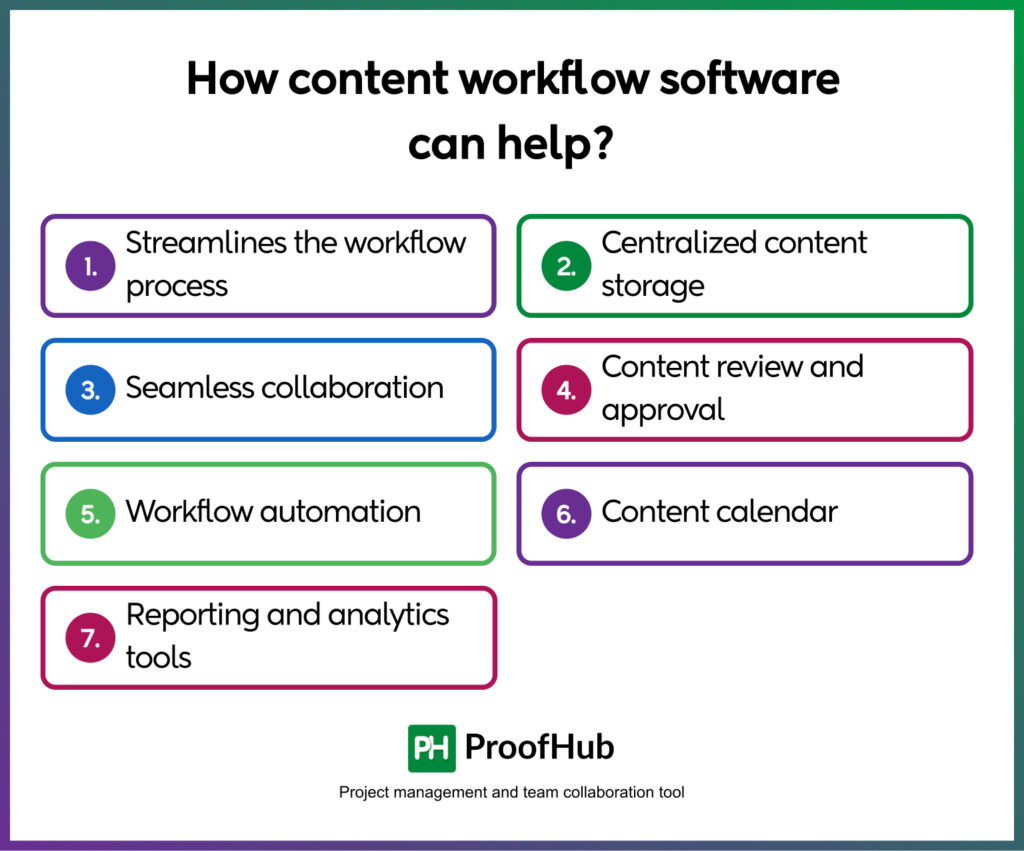
There’s nothing like ditching your notebook and switching to an agile content workflow management solution to keep your work content workflow running smoothly.
Every project your team works on has a workflow, whether you recognize it or not.
A skilled manager will be able to organize and coordinate workflows so that team members stay on track and collaborate effectively.
That is what content management software like ProofHub accomplishes for you.
A content workflow software can help you improve your performance, maximize your resources, and keep your team happy.
As someone who has used ProofHub for managing content workflow, I can tell you how helpful it can be. ProofHub is a powerful content management software that can help you streamline your content workflow system and make the entire process more efficient. Here are some ways in which ProofHub can help:
- Streamlines the workflow process
It allows you to create custom workflows, assign tasks, and set deadlines for each task. This means that everyone on the team knows exactly what they need to do and when they need to do it.
- Centralized content storage
ProofHub creates a central spot for all of our content history and attributes by combining Table view and custom fields. When an article is updated, the task associated with it is updated to reflect that activity.
- Seamless collaboration
Team members can collaborate on content creation and editing, making it easy to work together on projects. You can assign tasks, set deadlines, and communicate with team members in real time with the live Chat feature.
- Content review and approval
ProofHub also comes with a built-in proofing tool that allows team members to review and provide feedback on content pieces. This can be particularly helpful in the editing and revision process, as it ensures that everyone is working from the same document and can see each other’s changes and comments.
- Workflow automation
Now, you can automate your content workflow process, saving you time and effort. You can set up workflows for content creation, editing, review, and approval, ensuring that everyone knows what needs to be done and when.
Also read – Top workflow automation software
- Content calendar
As discussed above, you can create a content calendar to keep track of all your content in ProofHub. You can see what content is scheduled to be published, when it will be published, and who is responsible for creating it.
- Reporting and analytics tools
Get real-time reports on the progress of different tasks, allowing you to identify bottlenecks and track performance metrics. It helps to ensure that your team is meeting deadlines and producing high-quality content.
Overall, ProofHub can be a game-changer for managing content workflow. It provides a comprehensive solution that streamlines the content management process, facilitates collaboration, and provides insights into team performance.
Ready to simplify your work processes and get more done? Explore these 21 must-have workflow management software solutions.
Try ProofHub: Create your custom workflow
Content creation should not be a source of stress for you. It should be as effortless and pleasurable as possible.
There is no one-size-fits-all approach to content workflow management. Use configurable content management software to create methods that work best for your team. Above all, continue to optimize your workflow as if it were a content marketing campaign.
ProofHub has been used to handle different content marketing campaigns by thousands of people. Our goal is to increase productivity at work.
Want to learn more about how this can be accomplished on our platform?
Start with our content management software and see yourself.
FAQs
What is a content workflow?
Content workflow is a set of steps from ideation to the completion of the content. A team plans, strategizes, and works upon this workflow to complete work effectively.
What are the 3 pillars of content management?
Content, context, and connection are 3 content management pillars that are important to engage readers, put the right message at the right time, and authentically connect with the readers.
What are the 5 types of content?
Summarizing the types of content in some types is a little difficult. However, the most common types of content forms are:
1. Blog posts
2. Social media content
3. Videos
4. Podcasts
5. Webinars
